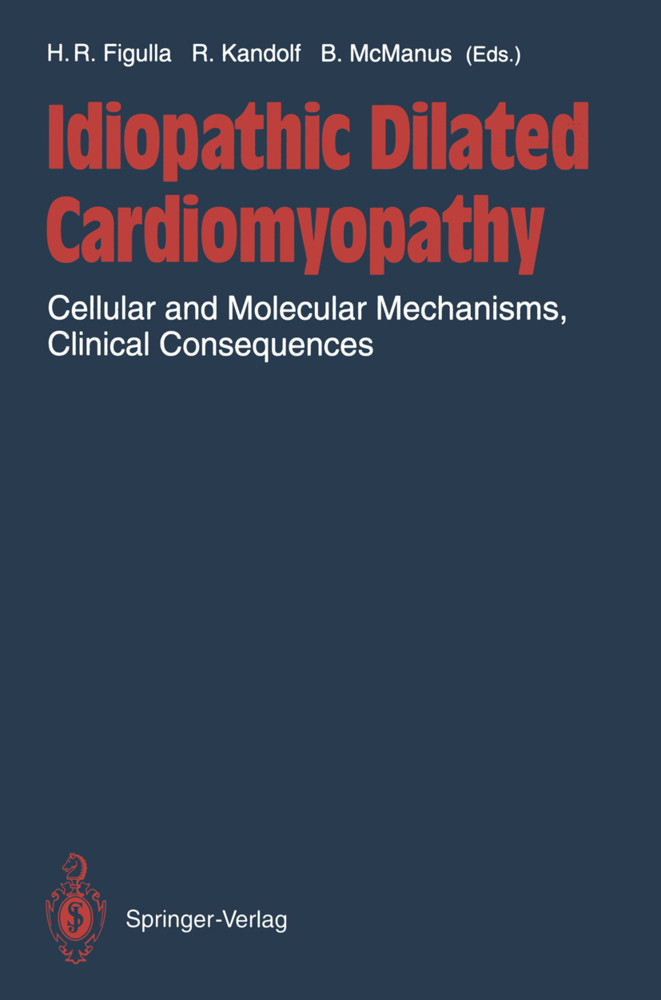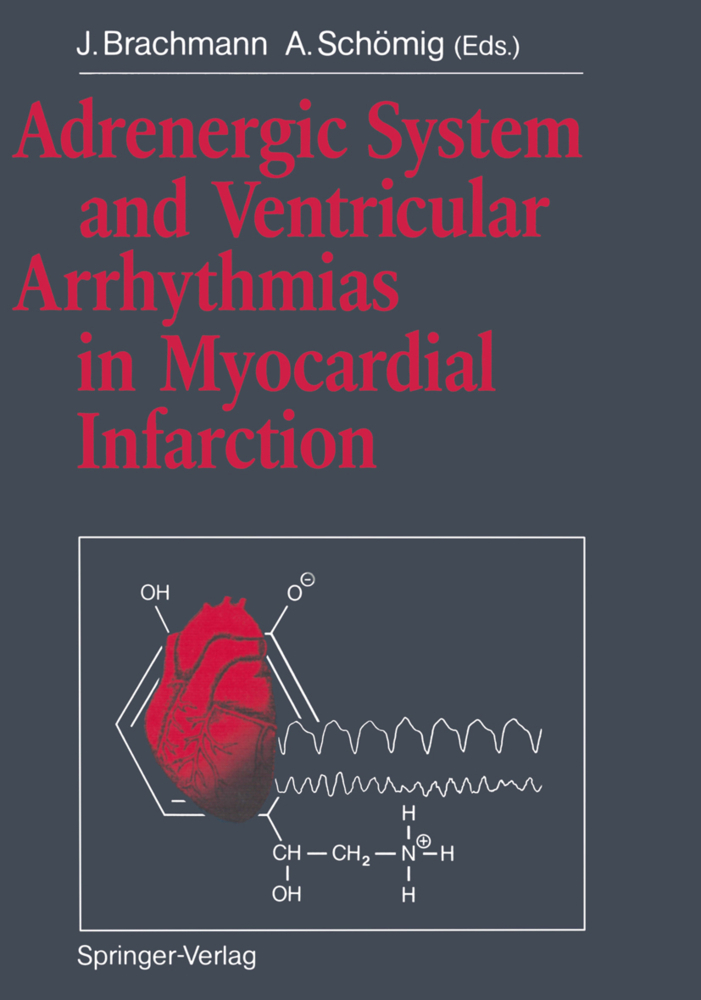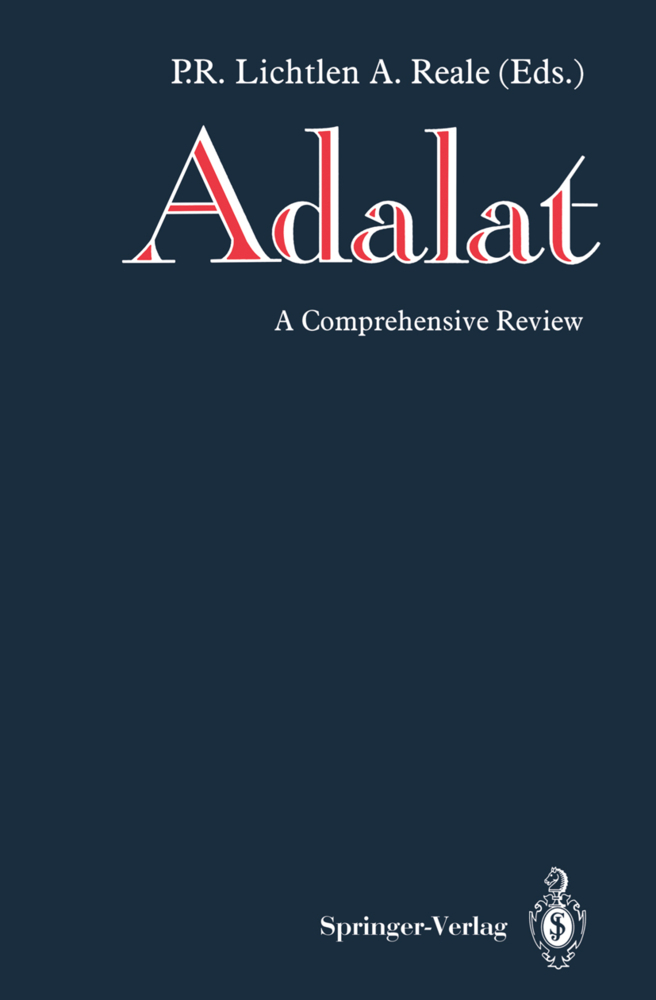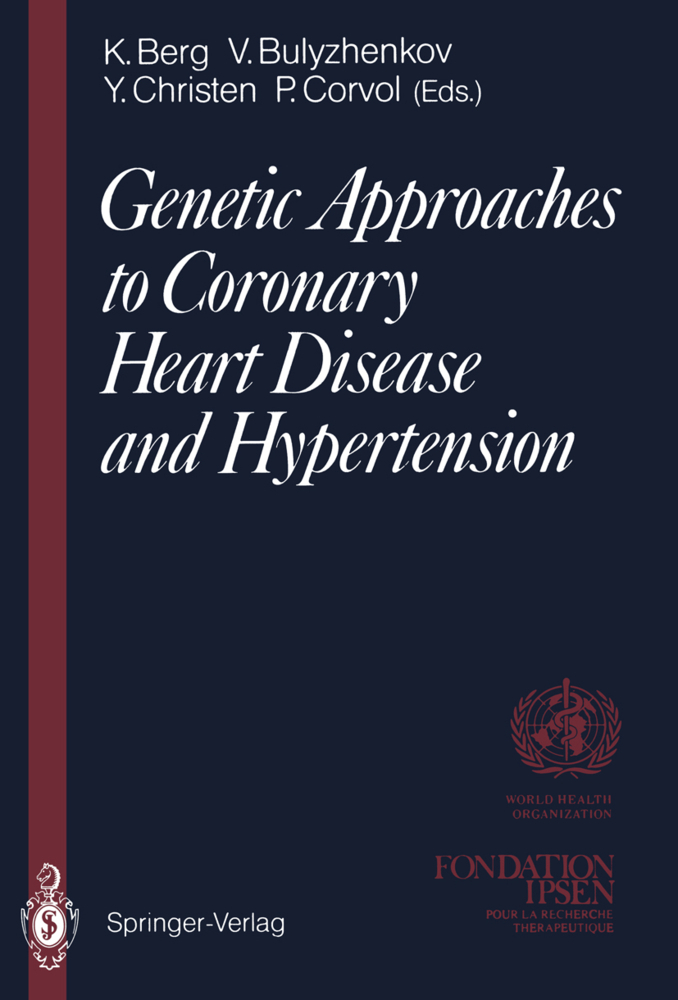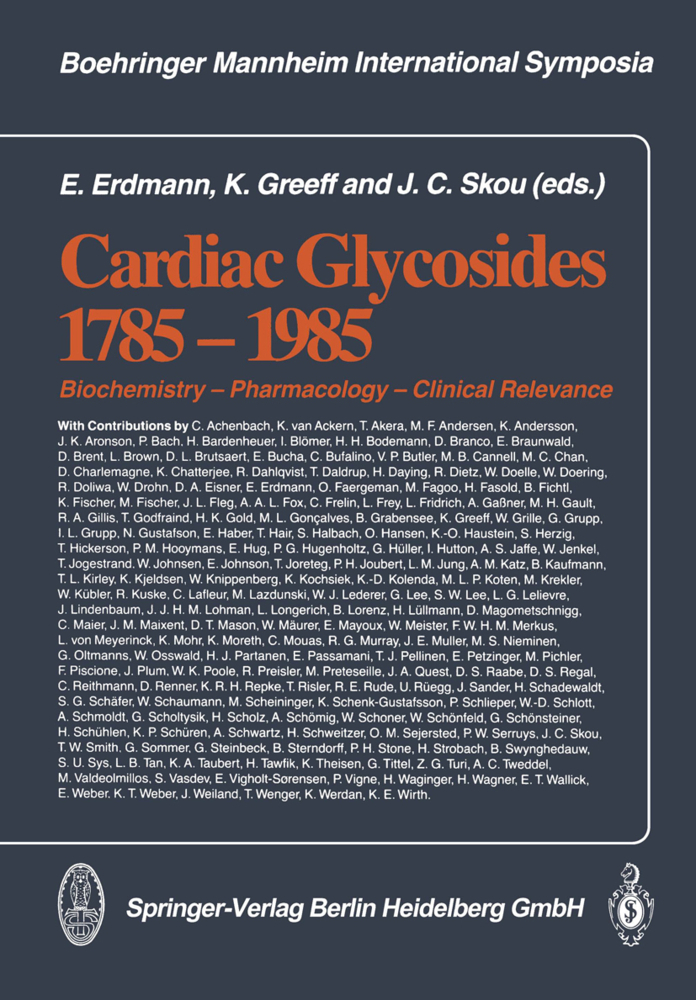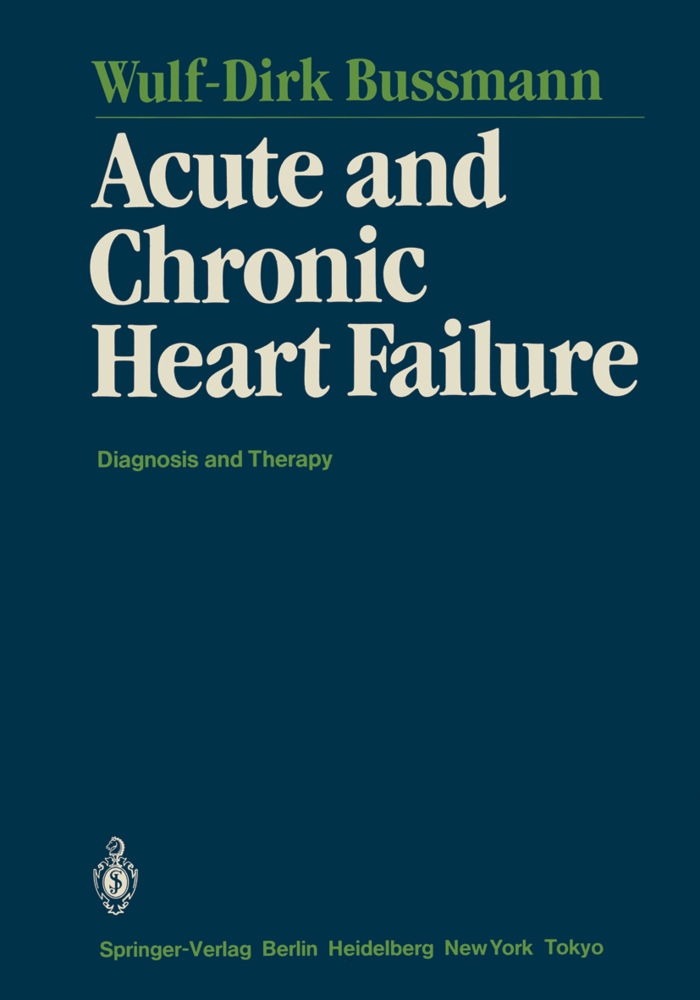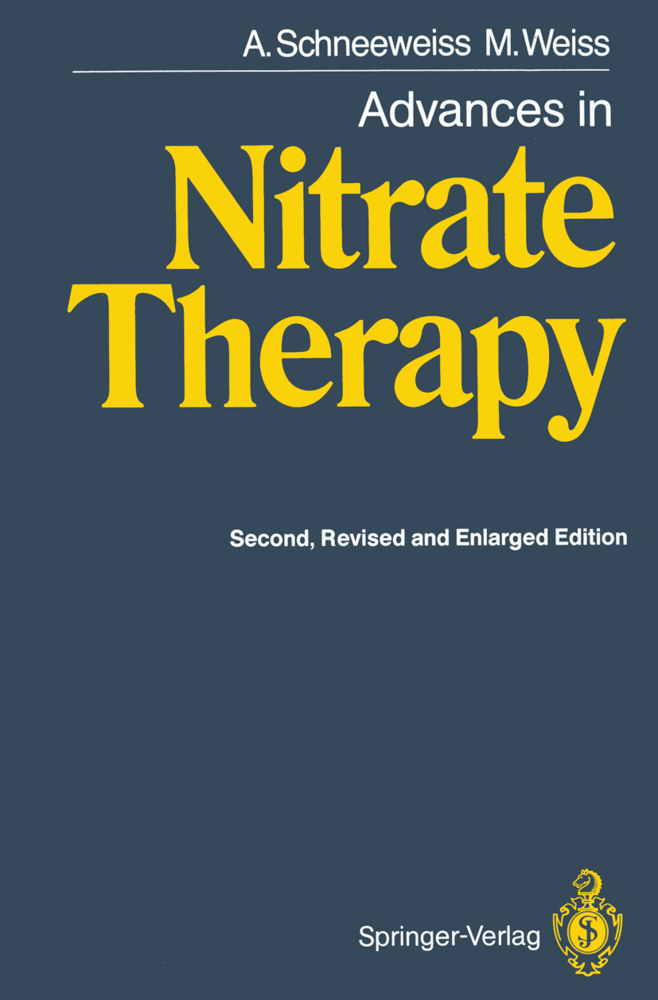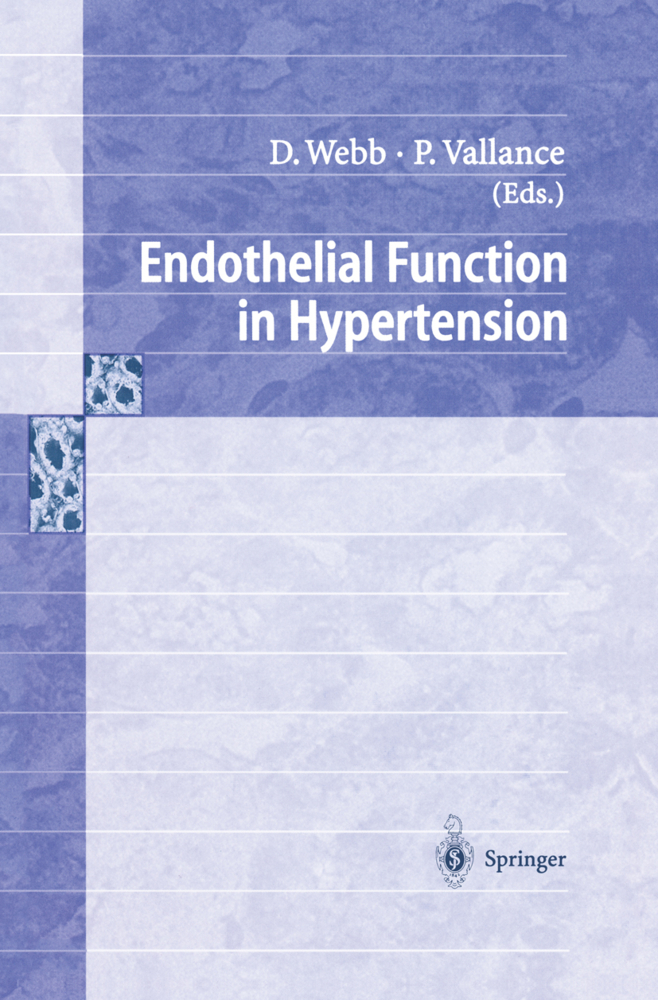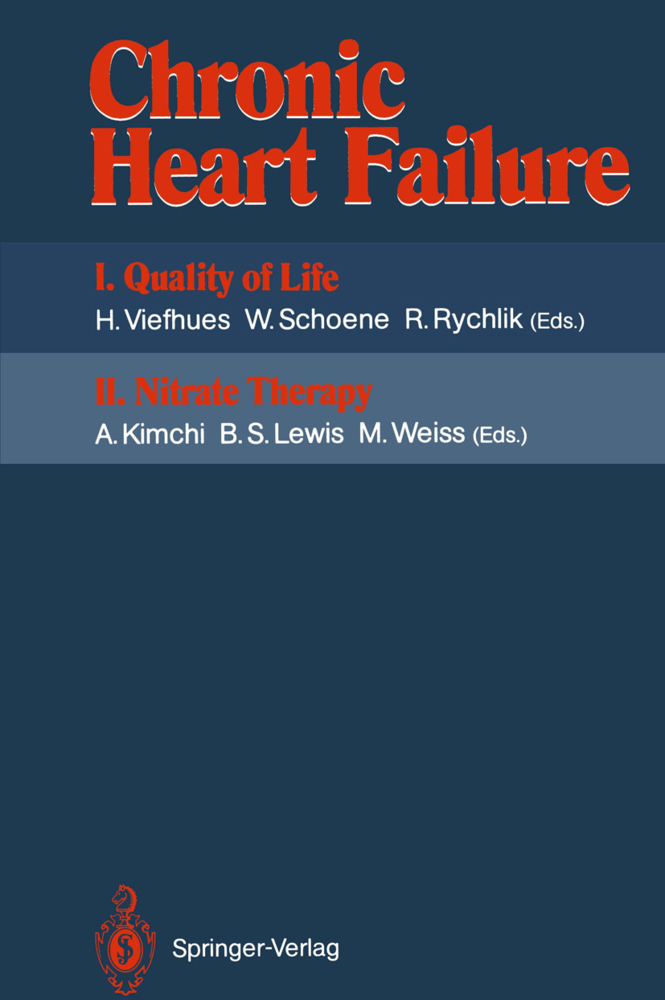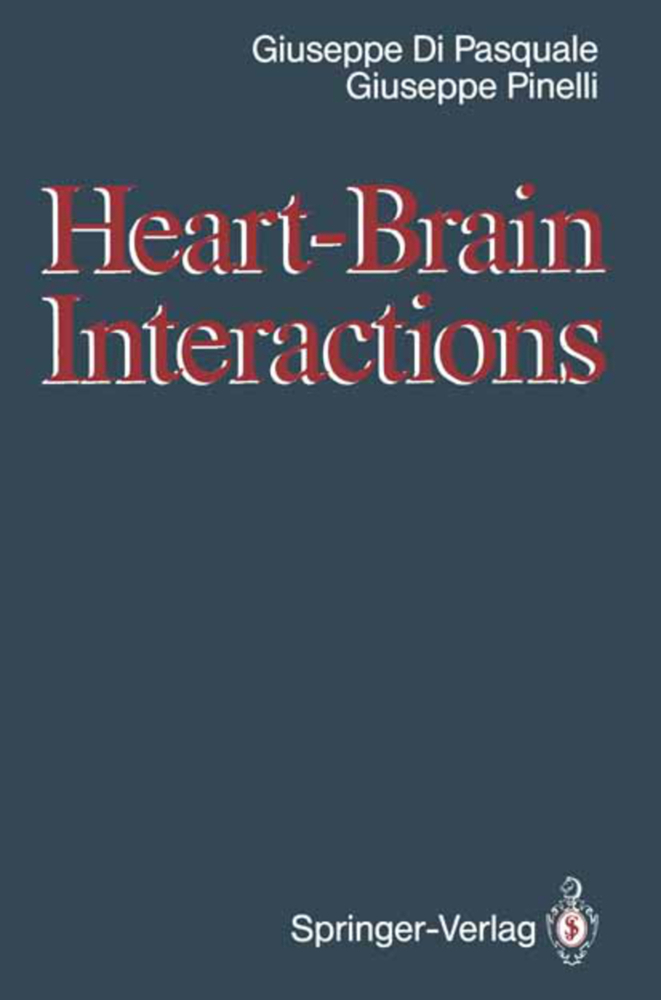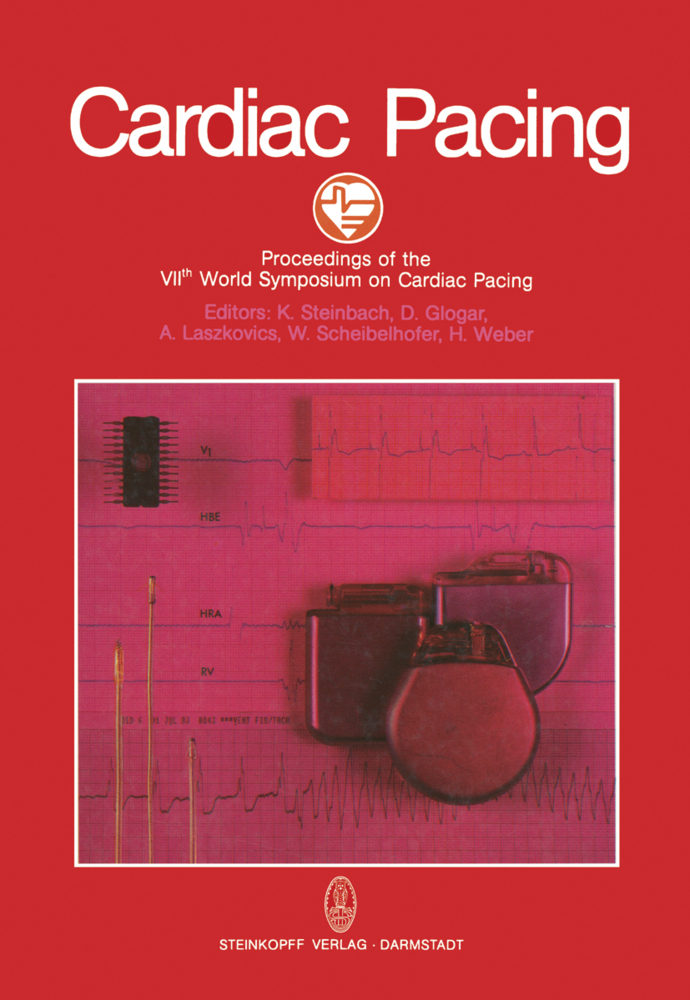Idiopathic Dilated Cardiomyopathy
Cellular and Molecular Mechanisms, Clinical Consequences
Idiopathic Dilated Cardiomyopathy
Cellular and Molecular Mechanisms, Clinical Consequences
Idiopathic cardiomyopathy has been categorized for over 10 years by the World Health Organization as dilated, hypertrophic, or restrictive. These categories have somewhat vague boundaries; however, idiopathic dilated cardiomyopathy (IDC) finds its general definition from unexplained four-chamber dilatation, prominent systolic dysfunction with depressed ejection fraction, a marked increase in total myocardial mass without wall thickening, myocyte hypertrophy and nuclear polyploidy, rarity of frank myocardial scars, but increased interstitial connective tissue and myocyte atrophy, all in the setting of anatomically normal heart valves and coronary arteries. Mural thrombi within cardiac chambers and atrioventricular valve regurgitation are common secondary con comitants. Myocardial inflammation is rare, but immunological abnormalities have been suggested. Ultrastructural features in clude increased mitochondrial numbers, lipid deposits, and myo fibrillar loss. Progressive pump failure with or without rhythm disturbances typically leads to ever-intensified medical therapies, and ultimately to transplantation or early death. The need for better understanding of IDC is represented by incidence rates varying from 5 to 8/100000 population across several populations, 10 000-20000 IDC deaths annually in the United States, and the generally increasing prevalence of the disease. More than 50% of heart transplant recipients have IDC as their primary myocardial disease. The half-life of patient sur vival without transplantation is generally less than 5 years. Treat ment with antiarrhythmics, calcium channel blockers, ~-adrenergic blockers, and angiotensin-converting enzyme inhibitors is being evaluated in clinical trials, but the role of such treatments in the pathobiology of progressive disease is unclear.
II. Epidemiology and Natural Course of IDC
Epidemiology of Idiopathic Dilated Cardiomyopathy
Natural History of Idiopathic Dilated Cardiomyopathy
III. Basic Molecular Concepts Toward Understanding of IDC
Molecular Analysis of Cardiac Growth and Development in Transgenic Mouse Model Systems
The Promoter of the Human Cardiac ?-Myosin Heavy-Chain Gene Is Controlled by an Upstream Enhancer
Growth Factor Expression in the Cardiac Myocyte
IV. Structural Abnormalities in IDC
The Cytoskeleton and Extracellular Matrix in Human Hearts with Dilated Cardiomyopathy
Macro- and Micropathology of Dilated Cardiomyopathy
Detection of Disruption of Sarcolemmal Membrane by Indium-111 Labeled Antimyosin Antibody Scan
Extracellular Matrix Expression, Organization, and Interaction with Heart Myocytes During Development and Disease
V. Contraction and Relaxation
Ventricular Remodeling in Idiopathic Dilated Cardiomyopathies
Mechanisms of Deficient cAMP Generation in Heart Failure
Abnormal Calcium Metabolism in Heart Muscle Dysfunction
Energy Requirements of Contraction and Relaxation of the Heart
VI. Microcirculation and Oxygen Supply in Cardiac Hypertrophy and IDC
Capillary Density, Distribution, and Length Parameters Related to Oxygen Supply in Myocardial Hypertrophy and Atrophy
Microcirculation in the Cardiomyopathic Syrian Hamster and in Human Congestive Cardiomyopathy
The Microcirculation in Cardiac Hypertrophy
Myocardial Oxygen Consumption in Patients with Idiopathic Dilated Cardiomyopathy: Effects of Vasodilating and Inotropic Agents
Regression of Cardiac Hypertrophy with Pharmacotherapeutic Regimen
VII. Ionic Channels and Signal Gating.-?-Adrenergic Receptor Dysfunction in the Pathogenesis of Idiopathic Dilated Cardiomyopathy
Na+ Channels as Molecular Substrate of Cardiac Excitability: Elementary Properties and Responsiveness to Drugs
The Involvement of Gs in Regulation of the L-Type Voltage-Gated Ca2+ Channel
Inositol Phosphates in Cardiac Regulation
VIII. Virus and Cardiomyopathy
Enterovirus-Induced Cardiomyopathy: Molecular Analysis of Acute and Persistent Myocardial Infections
Direct Damage of Myocardium by Enterovirus
Natural History of Enterovirus Persistence in the Murine Model of Coxsackievirus-Induced Myocarditis: A Quantitative In Situ Hybridization and Immunohistochemistry Study
Detection and Typing of Enteroviruses
Specific and Nonspecific Heart Defenses in Enteroviral Infections
IX. Immunological Factors in Cardiomyopathy
Heart Autoantibodies in Human Myocarditis and Cardiomyopathy: Virus and Skeletal Muscle Cross-reactivity
Are Anti-cardiac Antibodies in Dilated Cardiomyopathy "Natural" Antibodies?
X. Therapeutic Options in IDC and Myocarditis
Animal Models for Therapeutic Trials of Viral Myocarditis
Immunosuppressive Therapy in Human Myocarditis
Interferon Therapy in Enterovirus-Associated Idiopathic Dilated Cardiomyopathy
The Role of ?-Blockers in Idiopathic Dilated Cardiomyopathy: Clinical Effect and Molecular Mechanism
The Role of Calcium Channel Blockers in Idiopathic Dilated Cardiomyopathy
Gene Therapy for Cardiovascular Disease: Realistic Possibilities for the Future.
I. Introductory Perspectives
Idiopathic Dilated Cardiomyopathy: Current Concepts in Clinical ResearchII. Epidemiology and Natural Course of IDC
Epidemiology of Idiopathic Dilated Cardiomyopathy
Natural History of Idiopathic Dilated Cardiomyopathy
III. Basic Molecular Concepts Toward Understanding of IDC
Molecular Analysis of Cardiac Growth and Development in Transgenic Mouse Model Systems
The Promoter of the Human Cardiac ?-Myosin Heavy-Chain Gene Is Controlled by an Upstream Enhancer
Growth Factor Expression in the Cardiac Myocyte
IV. Structural Abnormalities in IDC
The Cytoskeleton and Extracellular Matrix in Human Hearts with Dilated Cardiomyopathy
Macro- and Micropathology of Dilated Cardiomyopathy
Detection of Disruption of Sarcolemmal Membrane by Indium-111 Labeled Antimyosin Antibody Scan
Extracellular Matrix Expression, Organization, and Interaction with Heart Myocytes During Development and Disease
V. Contraction and Relaxation
Ventricular Remodeling in Idiopathic Dilated Cardiomyopathies
Mechanisms of Deficient cAMP Generation in Heart Failure
Abnormal Calcium Metabolism in Heart Muscle Dysfunction
Energy Requirements of Contraction and Relaxation of the Heart
VI. Microcirculation and Oxygen Supply in Cardiac Hypertrophy and IDC
Capillary Density, Distribution, and Length Parameters Related to Oxygen Supply in Myocardial Hypertrophy and Atrophy
Microcirculation in the Cardiomyopathic Syrian Hamster and in Human Congestive Cardiomyopathy
The Microcirculation in Cardiac Hypertrophy
Myocardial Oxygen Consumption in Patients with Idiopathic Dilated Cardiomyopathy: Effects of Vasodilating and Inotropic Agents
Regression of Cardiac Hypertrophy with Pharmacotherapeutic Regimen
VII. Ionic Channels and Signal Gating.-?-Adrenergic Receptor Dysfunction in the Pathogenesis of Idiopathic Dilated Cardiomyopathy
Na+ Channels as Molecular Substrate of Cardiac Excitability: Elementary Properties and Responsiveness to Drugs
The Involvement of Gs in Regulation of the L-Type Voltage-Gated Ca2+ Channel
Inositol Phosphates in Cardiac Regulation
VIII. Virus and Cardiomyopathy
Enterovirus-Induced Cardiomyopathy: Molecular Analysis of Acute and Persistent Myocardial Infections
Direct Damage of Myocardium by Enterovirus
Natural History of Enterovirus Persistence in the Murine Model of Coxsackievirus-Induced Myocarditis: A Quantitative In Situ Hybridization and Immunohistochemistry Study
Detection and Typing of Enteroviruses
Specific and Nonspecific Heart Defenses in Enteroviral Infections
IX. Immunological Factors in Cardiomyopathy
Heart Autoantibodies in Human Myocarditis and Cardiomyopathy: Virus and Skeletal Muscle Cross-reactivity
Are Anti-cardiac Antibodies in Dilated Cardiomyopathy "Natural" Antibodies?
X. Therapeutic Options in IDC and Myocarditis
Animal Models for Therapeutic Trials of Viral Myocarditis
Immunosuppressive Therapy in Human Myocarditis
Interferon Therapy in Enterovirus-Associated Idiopathic Dilated Cardiomyopathy
The Role of ?-Blockers in Idiopathic Dilated Cardiomyopathy: Clinical Effect and Molecular Mechanism
The Role of Calcium Channel Blockers in Idiopathic Dilated Cardiomyopathy
Gene Therapy for Cardiovascular Disease: Realistic Possibilities for the Future.
Figulla, Hans-Reiner
Kandolf, Reinhard
McManus, Bruce
| ISBN | 978-3-642-77893-3 |
|---|---|
| Artikelnummer | 9783642778933 |
| Medientyp | Buch |
| Auflage | Softcover reprint of the original 1st ed. 1993 |
| Copyrightjahr | 2012 |
| Verlag | Springer, Berlin |
| Umfang | XVI, 405 Seiten |
| Abbildungen | XVI, 405 p. 5 illus. in color. |
| Sprache | Englisch |

